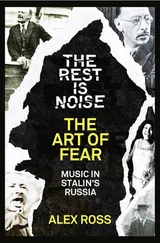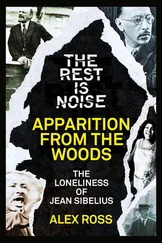After seeing Salome in Graz, Mahler doubted whether the voice of the people was the voice of God. Schoenberg, in his worst moods, completely inverted the formula, implying, in effect, that the voice of the people was the voice of the devil. “If it is art, it is not for all,” he later wrote, “and if it is for all, it is not art.” Did the split between the composer and his public come about as the result of such ferocious attitudes? Or were they a rational response to the public’s irrational vitriol? These questions admit no ready answers. Both sides of the dispute bore some degree of responsibility for the unsightly outcome. Fin-de-siècle Vienna offers the depressing spectacle of artists and audiences washing their hands of each other, giving up on the dream of common ground.
Paris 1900
Schoenberg was not the first composer to write “atonal music,” if it is defined as music outside the major-and minor-key system. That distinction probably belongs to Franz Liszt, erstwhile virtuoso of the Romantic piano, latter-day abbé and mystic. In several works of the late 1870s and early ’80s, most notably in the Bagatelle sans tonalité, Liszt’s harmony comes unmoored from the concept of key. Triads, the basic three-note building blocks of Western music, grow scarce. Augmented chords and unresolved sevenths proliferate. The diabolical tritone lurks everywhere. These profoundly unfamiliar works puzzled listeners who were accustomed to the flashy Romanticism of Liszt’s Hungarian Rhapsodies and other favorites. Wagner muttered to Cosima that his old friend was showing signs of “budding insanity.” But it wasn’t happening only in Liszt’s brain. Similar anomalies cropped up in Russia and France. The fabric of harmony was warping, as if under the influence of an unseen force.
Paris, where Liszt caused mass hysteria in the earlier part of the nineteenth century, was more or less the birthplace of the avant-garde as we now conceive it. Charles Baudelaire struck all the poses of the artist in opposition to society, in terms of dress, behavior, sexual mores, choice of subject, and style of delivery. The august Symbolist poet Stéphane Mallarmé defined poetry as a hermetic practice: “Everything that is sacred and that wishes to remain so must envelop itself in mystery.”
The young Debussy took that attitude as gospel. To his colleague Ernest Chausson he wrote in 1893: “Music really ought to have been a hermetical science, enshrined in texts so hard and laborious to decipher as to discourage the herd of people who treat it as casually as they do a handkerchief! I’d go further and, instead of spreading music among the populace, I propose the foundation of a ‘Society of Musical Esotericism ...’”
Debussy shared with Schoenberg a petit bourgeois background. Born in 1862, the son of a shop keep er turned civil servant, he studied at the Paris Conservatory, where he struggled for several years to write a cantata sufficiently dull to win the sinecure of the academically oriented Prix de Rome. He finally succeeded with The Prodigal Son, in 1884.
In his spare time, Debussy sampled the wares of Paris’s avant-garde scenes, browsed in bookshops stocked with occult and Oriental lore, and, at the Bayreuth festivals of 1888 and 1889, fell under the spell of Parsifal. He attended Mallarmé’s elite Tuesday gatherings from around 1892 on, and also delved into more obscure regions—cultish Catholic societies such as the Kabbalistic Order of the Rose-Cross and the Order of the Rose-Cross of the Temple and Graal. Alas, it does not seem to be the case, despite claims put forward in the bestselling books Holy Blood, Holy Grail and The Da Vinci Code, that Debussy served as the thirty-third grand master of the Prieuré de Sion, which, according to a fabricated legend, guarded the secret of the Grail itself.
All this was standard-issue post-Wagnerian mumbo-jumbo. But Debussy’s honest quest for an unblemished, truthful musical language soon led him to other, distinctly un-Wagnerian sources. Just before his second trip to Bayreuth, in 1889, he attended the Paris Universal Exposition, which imported exotic sights and sounds from around the world, courtesy of a network of oppressive colonial regimes. It was here that Gauguin first became enamored of the tropical simplicity that eventually led him to take up residence in Tahiti. Debussy listened transfixed to the music of a Vietnamese theater troupe, with its effects of resonating gongs, and also to a Javanese gamelan ensemble, with its minimal scales of five notes, its delicate layering of timbres, its air of suspended animation. Gamelan music, Debussy wrote, “contained all gradations, even some that we no longer know how to name, so that tonic and dominant were nothing more than empty phantoms of use to clever little children.”
Debussy also immersed himself in painting and poetry, working out musical analogies for his sharpest aesthetic impressions. Although he was later labeled a musical “impressionist,” Renoir and Monet affected him little; he was influenced more by Anglo-American painters—by Turner’s way of suffusing a landscape with light, by Whistler’s way of subsuming a seascape into a single mood. He read the poetry of Paul Verlaine, whose Fêtes galantes he discovered on the shelves of his piano pupil and lover Marie-Blanche Vasnier. And Verlaine’s perfectly simple and elusive images—the color of moonlight, the music of rustling leaves and falling rain, the unreadable beauty of the sea, the motion of ancient dances, the souls of marionettes—fired Debussy’s musical imagination. To evoke the instrument of “Mandoline,” he wrote strumming chords in which fifths accumulate in dreaming towers. To capture the plain mystery of the line “singing branches,” he let common chords tumble over one another in defiance of textbook rules. In the midst of that kaleidoscopic rush of sounds, the whole-tone scale, one of Debussy’s trademark devices, made an early appearance. This, in turn, brought the young composer to the threshold of so-called atonality.
Musicians and listeners had long agreed that certain intervals, or pairs of notes, were “clear,” and that others were “unclear.” The quoted words can be found on a cuneiform tablet from the Sumerian city of Ur. The clearest intervals were the octave, the fifth, the fourth, and the major third, which form the lower end of the harmonic series (see, again, the opening measures of Thus Spake Zarathustra). By contrast, the tritone had for centuries been considered a disturbing entity. The whole-tone scale, which had begun showing up as an exotic effect in mid-nineteenth-century Russian and Central European music, consists of six equal steps in succession; if one goes upward starting from any C on a piano, it is three white keys followed by three black keys. The scale has the interesting property of being “clear” and “unclear” in equal mea sure. It abounds in bright major thirds, which can be obtained by moving two steps from any note. It also abounds in tritones (three steps). In visual terms, the scale generates a palette at once luminous and unreal, bright and hazy.
Debussy also made use of pentatonic scales, which he encountered many times at the Paris Exposition—those ancient, elementary five-note scales that crop up in folk traditions all over the world, from Africa to Indonesia. And he continued using diatonic (major-and minor-key) scales, though often in a spirit of nostalgia or satirical play.
The composer thought deeply about the physical facts underlying harmony. Hermann von Helmholtz, in his 1863 treatise, On the Sensations of Tone as a Physiological Basis for the Theory of Music, had explained the physics of the natural harmonic series and attempted to define human perceptions of consonance and dissonance in relation to it. As the waveforms of any two simultaneous tones intersect, they create “beats,” pulsations in the air. The interval of the octave causes a pleasant sensation, Helmholtz said, because the oscillations of the upper note align with those of the lower note in a perfect two-to-one ratio, meaning that no beats are felt. The perfect fifth, which has a three-to-two ratio, also sounds “clean” to the ear. Debussy may have known Helmholtz’s work; he certainly knew the eighteenth-century speculations of Rameau, who had linked standard harmony to the overtone series. Debussy loved to plant octaves and fifths in the bass and let a rainbow of narrower intervals shimmer in the upper air.
Читать дальше












